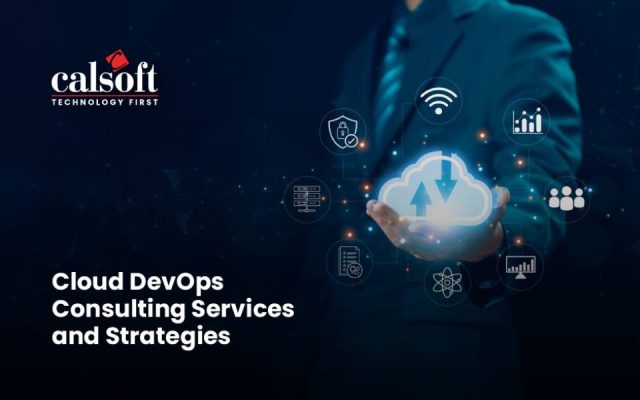Picture this: You’ve handed over your deliverables well within the deadlines and the budget. No, you didn’t have to burn the candle at both ends and yes, the deliverables are your teams’ best work because you all worked as one and no one toiled away in silos – a utopian vision. However, it can turn into a reality with one of DevOps’ most serviceable offshoots – QAOps. QAOps is the business practice of incorporating quality assurance processes into software development and IT operations.
Unlike DevOps, QAOps is still in a relatively nascent stage, so teams face multiple challenges in its implementation. However, the advantages of QAOps exceed the implementational challenges. This light read will let you know what QAOPs is, what to expect while adopting QAOps, and how to maximize its benefits.
The Rise of QAOps
Throughout 2020, QAOps has been a hit amongst software development teams globally. The reason behind its popularity lies within its very principle.
Based on the same core principles of DevOps – shift left and automate, QAOps involves the integration of software testing into the continuous integration & continuous delivery CI/CD) pipeline, rather than testing after, on a one-off basis. QAOps thus requires direct, efficient collaboration between developers and testing engineers. For QAOps to work, no team should be working in isolation, out of sync.
QAOps involves cross-functional teams with the flexibility of domain expertise. Such an approach generates value by simplifying the process of testing and making it more efficient. The cross-functional team relies on the logic behind the DevOps movement for this operational efficiency by including automated testing, parallel testing, and scalability testing. This establishes a perpetual continuous delivery pipeline and the elimination of the boundaries that separate the different teams working on that pipeline.
Consequently, teams do not shrug off responsibility once the deliverable moves from one phase of the SDLC to another. In doing so, the cross-functional teams introduce more quality assessment checkpoints and processes. This continually improves and perfects the deliverable, making QAOps a prevailing change in the industry.
However, this progressive escalation of QAOps shines a light on its underlying issues.
Challenges in QAOps
No new, revolutionary approach to software development is without its initial set of hiccups. The same goes with QAOps. Here is a list of common challenges faced by QAOps teams, along with their solutions.
Establishing effective communication & collaboration: The very principle of QAOps involves the development, testing, and IT operations teams being in sync. Process changes, implicit knowledge, lack of established communication channels, and unfamiliarity can plague QAOps teams.
To alleviate these problems, teams must share the tribal knowledge that exists between them and cross-train. However, the boundaries of unfamiliarity might prove to be an obstacle to knowledge-sharing. This obstacle can be overcome by team-building exercises, incentivized training exercises, or the introduction of a collaboration-conducive, open culture. Additionally, maintaining the artifacts of collaboration is a must, because, in the absence of a knowledge base, collaboration with other team members can quickly catapult disagreements into a co-working nightmare.
Dealing with changing requirements: The integration of testing in the CI/CD cycle spells constant incremental changes and thus a constant change in the requirements and specifications of the deliverable. Changing requirements can disorient the team and cause confusion about the next plan of action.
Because the three functions – development, testing, and IT operations – work in an overlapping manner, it can be immensely difficult to identify the latest brief or gain complete visibility into the core as well as supplementary processes of the SDLC. It is imperative to establish governing frameworks and a concrete sequence of actions for QAOps.
Adapting to an unclear set of rules: Research from Gartner suggests that half of all organizational changes fail. Since QAOps is a new developmental approach and there is no well-established framework or manual that can guide aspiring QAOps teams from end-to-end, the probability of failure in the implementation of QAOps is higher.
The lack of clarity and guidance results in a lack of knowledge about the implementation of QAOPs and can create friction over handovers, new roles, new rules & ways of working, and can cause serious delays. To avoid this, teams should slowly introduce changes to processes & roles, and figure out a QAOPs model that is a best fit for them.
Justifying the cost of QAOps implementation: Even though the benefits and the ultimate increase in revenue are great stats for aspiring QAOPs teams, the initial cost of introducing new technologies, automation tools, processes & workarounds, employee training, and migration of data from organizational systems cannot be downplayed.
While it seems discouraging because there is no instant gratification, hang in there, since the destination outweighs the journey in this case. If you have a strong business case, time to test out QAOps, and provable metrics, it will be easier to secure the management buy-in and reap the benefits afterwards.
Despite the challenges in implementation, the QAOps movement is gaining legitimate traction from the global software development community and is destined to see a meteoric rise in popularity. 2021 is likely to see QAOPs becoming the standard for quality assurance.
Calsoft’s domain expertise and passion for top-notch business consulting have enabled its customers to trust it with end-to-end testing solutions. Calsoft has been at the forefront of quality engineering and has assisted multiple customers in integrating QA processes into their DevOps pipeline, guaranteeing them a robust and secure product.
References:
Gartner’s Human Resource Insights: Managing Organizational Change






